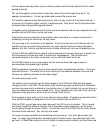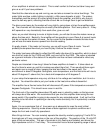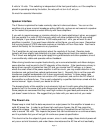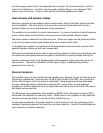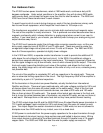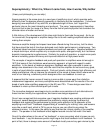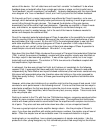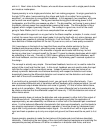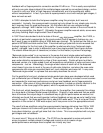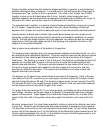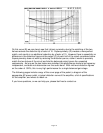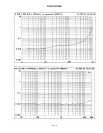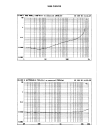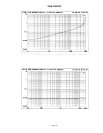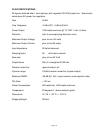Page 12
sink in it. Now I strive to be like Picasso, who could draw a woman with a single pencil stroke
and create a masterpiece.
Supersymmetry is not a single pencil stroke, but I am making progress. Its origin goes back to
the late 1970’s when I was examining the virtues and faults of so-called “error correcting
amplifiers”, an alternative to conventional feedback. In this approach, two amplifiers, a big one
and a small one work together. The big one handles the big job of delivering power to the
loudspeaker, and the little one sweeps up after it. The big amplifier, not having to worry about
the details, delivers power like a supertanker crossing the ocean. The little amplifier is like a
tugboat, which nudges it precisely into port. The concept is a good one, much of the credit
going to Peter Walker, but it is a bit more complicated than we might want.
Thoughts about this approach on my part led to the Stasis amplifier, a simpler, if cruder, circuit
in which the ocean liner could just about make it into port by itself with only minor damage, and
the tugboat was capable of crossing the Atlantic, if not the Pacific. Threshold and Nakamichi
have sold lots of these amplifiers for the last 19 years or so, and so it was pretty successful.
Yet it was always in the back of my head that there must be a better solution to the no-
feedback performance problem, something even simpler and more elegant. I felt that
symmetry and anti-symmetry in the character of signals and circuits held the key, but not
having any idea how, I amused myself for the next 15 years by drawing topologies which might
do something in this vein. One day in 1993 I drew a picture connecting two transistors, each
with local feedback, and the concept fell into place. The following year I received a patent on
the design.
The concept is actually very simple. Conventional feedback, local or not, is used to make the
output of the circuit look like the input. In this circuit, feedback was not used to make the input
look like the output in the conventional sense. Instead it works to make two halves of an
already symmetric balanced circuit behave identically with respect to distortion and noise,
dramatically lowering the differential distortion and noise but not the distortion and noise of
each half of the circuit considered by itself.
If you build such a symmetric (balanced) circuit, you get much of this effect already. If you
drive a matched differential pair of transistors without feedback with a balanced signal, you will
see a balanced output whose distortion and noise is typically 1/10 that of either device alone,
purely out of cancellation. With supersymmetry, the same differential pair’s characteristic can
be made so identical that the differential output will have only 1/100 the distortion and noise of
either device alone.
Supersymmetry does not reduce the distortion and noise present in either half of the output of
the balanced circuit. Comparing the distortion curves before and after the application of
supersymmetry, we see essentially no difference in either half of the balanced pair considered
alone. It is the balanced differential characteristic that improves dramatically, and that leads to
one singular requirement of supersymmetric operation; it must be driven by a balanced input
signal and it only produces a balanced output signal. You could drive it with a single-ended
input and hook a speaker up to only one output and ground, but there would be no point to it at
all.
Supersymmetry operates to make the two halves of the balanced circuit behave absolutely
identically. Constructing the two halves of the circuit with identical topologies and matching the
components precisely achieves a 20 dB or so reduction in distortion and noise, and local



